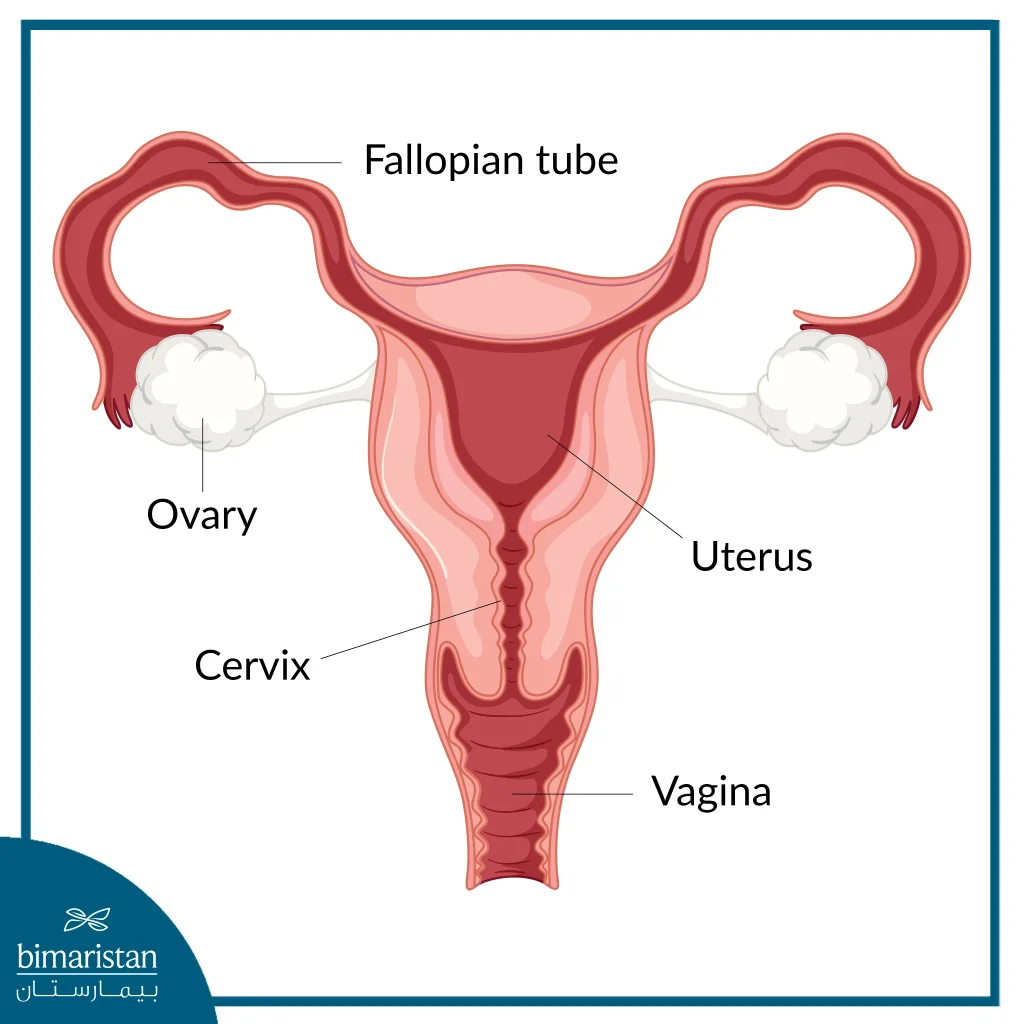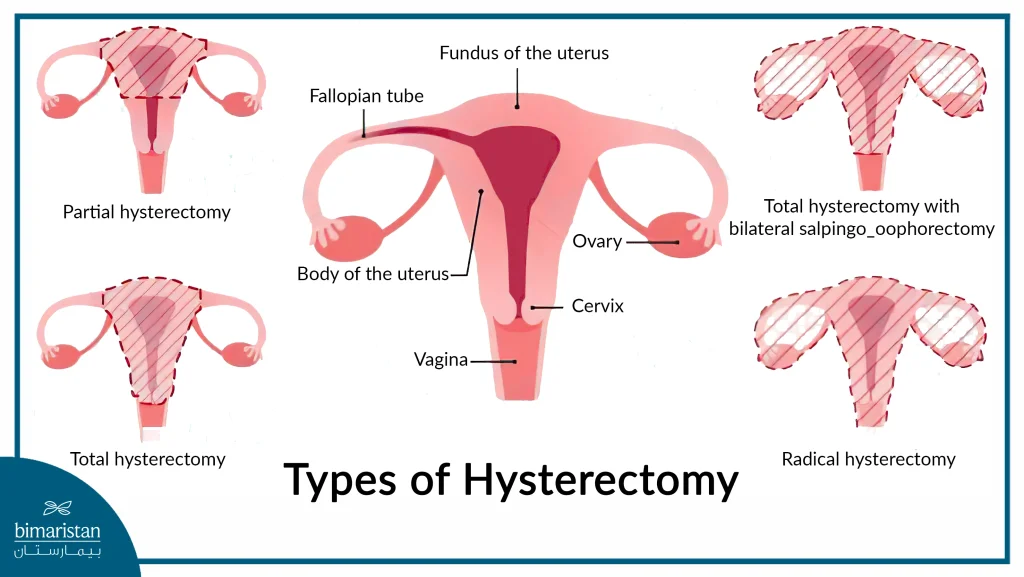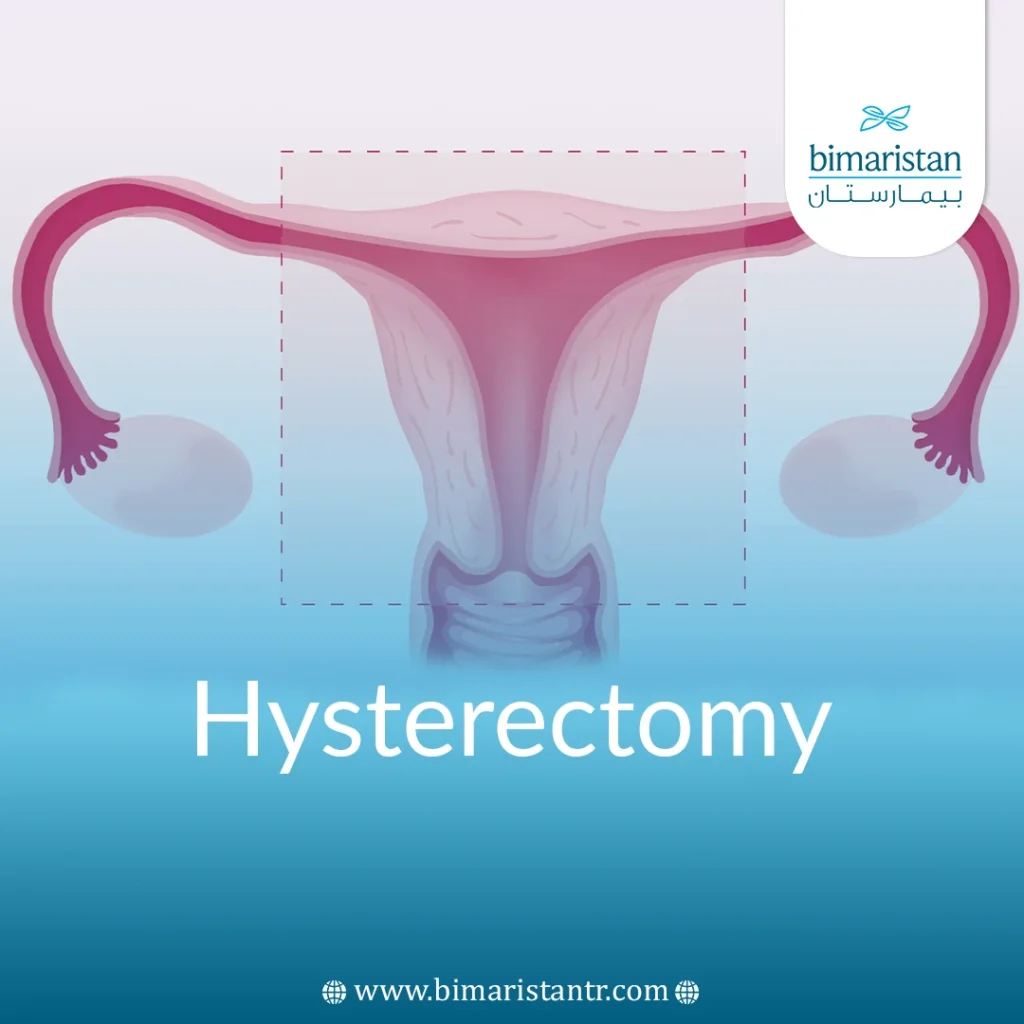Hysterectomy is a sensitive medical procedure that women undergo for various health reasons, including fibroids, severe bleeding, and certain cancerous conditions. This surgery has become safer and more effective with advances in medicine and technology.
In this context, Turkey stands out as one of the world’s leading destinations for hysterectomies, combining advanced medical expertise with modern healthcare facilities that ensure patients receive the highest medical care. This article provides a comprehensive overview of hysterectomy in Turkey, highlighting why Turkey is a distinctive choice for undergoing this critical procedure.
Overview of the uterus and the female reproductive system
The female reproductive system consists of external and internal organs.
The function of the external organs is to facilitate intercourse and assist in the passage of male sperm into the vagina and from there to the cervix and uterus. They also secrete various substances to prevent infections. These organs include:
- Labia majora
- Labia minora
- Bartholin’s glands
- Clitoris
On the other hand, the internal organs are responsible for pregnancy, childbirth, and imparting female characteristics by secreting various hormones. They consist of:
- Vagina
- Uterus
- Fallopian tubes
- Ovaries
The uterus is the organ most susceptible to diseases, with thousands of women suffering from uterine conditions each year, accounting for about 2-4% of human disorders.
The uterus has one of the most crucial functions for continuing human life on earth. It provides a suitable environment and nurturing space for the fetus’s growth and development before surviving independently outside the mother’s body.

What is hysterectomy, and why is it performed?
Hysterectomy is a surgical procedure to remove the uterus, which may also involve removing the ovaries, fallopian tubes, and surrounding tissues. After this surgery, a woman will no longer be able to conceive or give birth.
This surgery to take out the uterus is the second most common surgery among women after cesarean delivery, with approximately 200,000 hysterectomies performed annually in Turkey.
There are several reasons for undergoing this procedure, including:
- Severe, unexplained vaginal bleeding that is resistant to traditional treatments.
- Chronic pelvic pain: womb removal is considered a last resort for pelvic pain after exhausting other treatment options, as it is a significant step that should only be taken when no other solutions are available.
- Uterine fibroids and myomas: These are benign tumors that are common among women of reproductive age. Uterus removal due to fibroids is often the final solution to this problem, as these tumors frequently recur after other treatments.
- Uterine prolapse: This condition can lead to several issues, most notably urinary problems.
- Endometriosis: A condition where tissue similar to the uterine lining grows outside the uterus. The Womb removal operation may be performed if the condition repeatedly recurs.
- Cancers of the female reproductive system: These include cancers of the uterus, cervix, ovaries, and vagina.
Are there alternatives to hysterectomy?
The decision depends on the reason prompting the doctor to consider a uterus removal operation, the patient’s condition, and whether she wishes to have children or has decided to stop childbearing. Undergoing an operation to remove the womb will permanently prevent pregnancy and may lead to early menopause (if the ovaries are removed and the patient has not already entered menopause).
In the case of myomas or fibroids, it may be possible to wait and monitor until they shrink and disappear on their own after menopause. Other minimally invasive surgeries, such as laparoscopic myomectomy (removal of the fibroid only) and many other procedures, can also be performed.
For endometriosis, the doctor may prescribe various hormonal medications that help alleviate or completely treat the condition, and localized removal of endometriosis can be done using laparoscopy.
In some cases, performing specific exercises to strengthen the muscles that support the uterus, such as Kegel exercises for pelvic muscle strengthening, may be beneficial if there is uterine prolapse.
However, total hysterectomy remains the best option with the lowest recurrence rate and is most suitable for women who have entered menopause. Many of the treatments mentioned above carry a high risk of recurrence or may not be sufficiently curative.
Bimaristan Medical Center helps you determine the optimal treatment approach (whether uterus removal or another option) that suits your condition based on the opinions of the best and most skilled doctors. The chosen treatment is performed in the most advanced medical centers in Turkey. Contact us to guide you to what is best for you.
Types of hysterectomy
There are several types of hysterectomy, depending on the underlying causes, surrounding factors, and the need to remove adjacent organs in some cases. These types include:
- Supracervical or Partial Hysterectomy: Only the uterus is removed, while the cervix is preserved.
- Total Hysterectomy: In this procedure, both the uterus and cervix are entirely removed.
- Total Hysterectomy with Bilateral Salpingo-Oophorectomy: This involves removing the uterus, cervix, ovaries, and fallopian tubes.
- Radical Hysterectomy: This involves the removal of the uterus, cervix, upper part of the vagina, surrounding tissues, and lymph nodes. The ovaries and fallopian tubes are usually removed as well. This method is often used as a final treatment for malignant or recurrent cancers.

How is hysterectomy performed?
Before the procedure, the doctor explains the surgical steps, potential risks, and complications the patient should expect. Blood and urine samples may sometimes be requested, or a pelvic ultrasound may be performed.
There are several surgical approaches to performing surgical removal of the uterus, and the doctor typically chooses the best method based on their experience and the patient’s condition. Depending on the patient’s preference, the procedure can be done under general or local anesthesia. Here are some types of hysterectomy procedures in Turkey:
Abdominal hysterectomy:
In this procedure, the doctor removes the uterus through a large incision in the abdomen. The incision can be either horizontal or vertical, typically about six inches long. The vertical incision extends from the navel to the pubic bone, while the horizontal incision is made above the pubic hairline. This method is often used in cases of cancer, multiple fibroids, or when the uterus is huge, as well as in the presence of adhesions that complicate other surgical methods.
Compared to other methods, this approach carries higher risks and complications, such as wound infection, bleeding, blood clots, and damage to nearby nerves and tissues. The patient usually needs several days in the hospital until the wound heals completely, with recovery taking about six weeks. However, recent studies indicate that despite the higher complications associated with this method, it remains a fundamental surgical approach in medical literature, even with the development of other techniques.
PHOTO 3
Vaginal hysterectomy:
This is a minimally invasive procedure where no abdominal incision is made, only a small incision in the vagina through which the uterus is removed. The surgery typically takes no more than an hour, and the patient may only need to stay in the hospital for one night, with some being discharged the same day. It is considered the preferred method with the most minor complications and the fastest recovery, usually taking about four weeks.
Laparoscopic/robot-assisted hysterectomy:
The doctor inserts a laparoscope through one of the small incisions, along with other surgical instruments through additional incisions, and the uterus is removed in small pieces, one at a time.
Usually, three or four incisions are made, with the laparoscope inserted through an incision near the navel.
Uterus removal can be performed laparoscopically, but instead of removing the uterus through surgical incisions, it is extracted through the vagina. This procedure is then called a laparoscopic-assisted vaginal hysterectomy.
PHOTO 4
In a robot-assisted uterus removal, the surgeon uses a robotic arm to control the surgical instruments, removing the uterus while the doctor operates remotely from a computer screen. No significant difference in surgical outcomes has been observed between robot-assisted and non-robot-assisted procedures, although the robotic method typically takes longer than other approaches.
Laparoscopic surgery offers several benefits, including reduced risk, shorter recovery time, and a shorter hospital stay, with most patients able to return home the day after the procedure. As with vaginal womb removal, full recovery from laparoscopic womb removal takes about four weeks.
Complications and risks of hysterectomy
The surgery to take out the uterus is generally a safe procedure with few complications, but like any surgery, it carries certain risks, especially in the case of abdominal hysterectomy. Some of these risks include:
- Infection of the surgical incisions.
- Severe bleeding during or after the womb removal operation, though mild bleeding is normal.
- Injury to the urinary tract or nearby intestines.
- Cardiac and respiratory issues related to anesthesia.
These complications are common to many surgical procedures, and many surgeries to take out the uterus in Turkey have been successfully performed with minimal complications.
Long-term complications of hysterectomy
- Swelling and numbness at the incision site.
- Abdominal sagging due to the surgical incision, especially with abdominal womb removal.
- Early onset of menopause if the ovaries are removed.
What to expect after hysterectomy?
The expected outcomes vary depending on the type of surgery performed and the patient’s age and overall health.
If the ovaries are removed, the woman will enter early menopause, and her menstrual periods will cease. Significant hormonal changes may occur, which can affect her life, mood, and even sexual health.
In most cases, women can resume regular sexual activity after the operation to remove the womb. However, in some instances, sexual function may be disrupted, and women may experience feelings of loss or depression after the removal of the uterus.
Other complications may include hot flashes, sweating, loss of appetite, or even new vaginal discharge. If these complications occur, the patient should consult her doctor, who can prescribe sedatives and reassure the patient while helping her family understand and cope with what she is experiencing.
References:
- Hysterectomy, Women’sHealth.
- Hysterectomy, UCSFHealth.
- Hysterectomy, MedlinePlus.
- Hysterectomy, AdvancedGynaecologyMelbourne.
